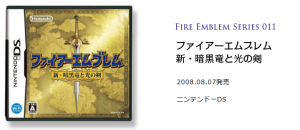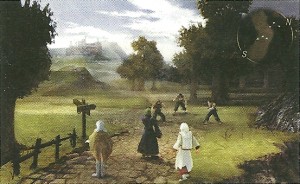Today marks the 28th anniversary of the Fire Emblem series!
For this occasion, I’d like to discuss something that many Fire Emblem fans know and take for granted: the Fire Emblem games’ numbering system.
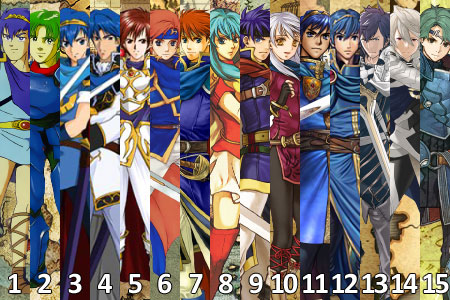
I imagine most of you reading this probably know the numbers like the back of your hand. But just for reference, this is how we usually number the Fire Emblem games:
| Number | English Title |
|---|---|
| 1 | Shadow Dragon and Blade of Light |
| 2 | Gaiden |
| 3 | Mystery of the Emblem |
| 4 | Genealogy of the Holy War |
| 5 | Thracia 776 |
| 6 | Binding Blade |
| 7 | Blazing Blade |
| 8 | The Sacred Stones |
| 9 | Path of Radiance |
| 10 | Radiant Dawn |
| 11 | Shadow Dragon |
| 12 | New Mystery of the Emblem |
| 13 | Awakening |
| 14 | Fates |
| 15 | Echoes: Shadows of Valentia |
Note: Only the mainline Fire Emblem games are numbered. Spin-offs like Heroes and Warriors are not given numbers.
For us fans, referring to each game using numbers is very natural. Eg. if I said “FE6”, you probably know that I’m talking about Binding Blade. Yet for those observing from afar, or those new to the series, this system can seem a bit strange.
The main reason for this is of course because, officially, none of the Fire Emblem games are numbered. Unlike, say, Final Fantasy, where the latest Final Fantasy is explicitly titled “Final Fantasy XV [15]”. The numbering system is purely something we fans created.
Birth of the Numbering System
Some may ask: why exactly do Fire Emblem fans refer to the games by number?
The short answer, it seems, is because of a combination of tradition and convenience.
As for the long answer, we’ll need to travel back in time towards the early days of the Fire Emblem series and its then-developing fan community.
Disclaimer: I first entered the community during the release of Blazing Blade, so my knowledge of the earlier days is via research or second-hand accounts.
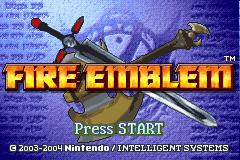
Back then, Fire Emblem was a very niche Japan-only series. It wasn’t until the 7th game, Blazing Blade, which was released a whopping 13 years after the very first game, that the series finally made its way to the West.
Around this time, the Western community was relatively small and there was a lot to talk about. However there were two problems that got in the way of discussion.
One, Blazing Blade was simply released as “Fire Emblem” in the West. So fans needed a way to simultaneously distinguish it from other games in the series and make it obvious that it was the 7th game in the series.
Two, it was somewhat awkward discussing the games prior to Blazing Blade because not everyone was familiar with the Japanese subtitles or even the fan-translated English subtitles, nor the order of releases.
Thus, the easiest way was to affix numbers to each of the games.
This solved problem one, because fans could recognise “Fire Emblem 7” as being the 7th game in the series, not the first, and grew to understand it as being Blazing Blade. Likewise, fans could refer to FE3 instead of Mystery of the Emblem, Riddle of the Crests, Monshou no Nazo, etc.
From then on, the numbering system naturally grew in popularity. After Blazing Blade, The Sacred Stones came out, which quickly became FE8. Then Path of Radiance was FE9 and so forth. Eventually, it became a part of the fan culture.
(As an aside, Path of Radiance was actually announced before The Sacred Stones, despite releasing afterwards. So for a brief period of time, Path of Radiance was known as FE8, etc.)
The First Hurdle
Back to the present, most people (non-fans included) happily accept this reasoning for the existence of the numbering system. However, some may continue to ponder and reach a stumbling block. Because after FE10: Radiant Dawn, we start to reach a grey area: remakes.
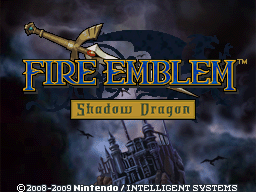
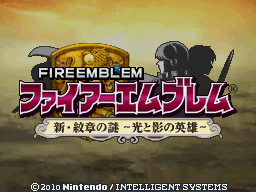
As far as I’m aware, Fire Emblem is perhaps the only series where fans count remakes as new, numbered games in the series. We have Shadow Dragon as FE11 and New Mystery of the Emblem as FE12, even though they are remakes of the first and third games respectively.
Nevermind others, I imagine there are plenty of fans that are baffled by this choice.
The reason for this is a bit more esoteric. On the surface, the remakes are given new numbers because it’s an “easy” choice. Going from FE10, you naturally have FE11 and FE12. Some may also argue that while they are remakes, they have been completely revamped and thus qualify as being “new games”.
The real reason is because Nintendo/Intelligent Systems considers these games the 11th and 12th games, or at least they once did.
Although they don’t explicitly call them Fire Emblem 11 and 12, they describe them as the 11th and 12th entries in the series, which is close enough. Not only that, but internally, in the game code, they are labelled as Fire Emblem 11 and Fire Emblem 12.
Whether you agree or not, most fans have already accepted this logic and moved on.
(Another aside. The Sacred Stones and Path of Radiance are both labelled as Fire Emblem 8 internally. Meanwhile Radiant Dawn is Fire Emblem 10. But since it’s silly to have two FE8s, we stick with the “natural” order instead of the internal order.)
Official Retcon
After the dilemmas of the DS remakes, the numbering system has continued on largely unchallenged. Awakening was widely recognised as FE13, then Fates (all three versions) as FE14, and Echoes followed the previous remake logic and became our FE15.
But during this time, something happened that muddied the waters slightly–and, funnily enough, it was because of Nintendo/IS’s own doings.
Around when New Mystery of the Emblem came out, Fire Emblem was celebrating its 20th anniversary. It was then that Nintendo/IS started describing New Mystery of the Emblem as the 13th game in the series. Not just that, but every game starting from Binding Blade was one number higher than fans expected.
(2) (Fire Emblem) Shadow Dragon: A strategy RPG released for the Nintendo DS in August 2008. The 12th game in the series.
(…)
(9) Sword of Seals: A strategy RPG released for the GameBoy Advance in March 2002. The 7th game in the series.
—Footnotes from Iwata Asks: New Mystery of the Emblem.
What exactly had caused the apparent shift in the numbering system?
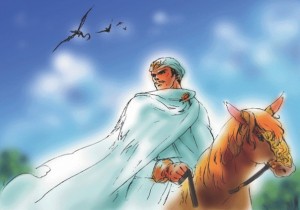
Hardin from Archanean Chronicles.
The answer was clear: In-between Thracia 776 and Binding Blade, Nintendo/IS had slotted in BS Fire Emblem: Archanean Chronicles. Thus, BS Fire Emblem was the new 6th game and this explained why all the games from Binding Blade had been shifted up by one.
An official answer was even provided during a developer interview conducted by 8-4, Ltd. who handled Awakening‘s official localisation.
Ah, that. (laughs) Well, there was a version of Fire Emblem released for Nintendo’s Super NES Satellaview service in Japan in 1997. If you include that, then Awakening is the 14th Fire Emblem game.
–Genki Yokota (Nintendo Director)
Later, it was discovered that Awakening was internally Fire Emblem 14. So clearly Nintendo/IS were sticking to their guns. (Likewise, Fates is Fire Emblem 15 internally and Echoes is Fire Emblem 16.)
Once fans discovered this, nothing really changed. From the very beginning, the numbering system was something created and used by fans. While the remakes were a fringe case, most fans agreed that BS Fire Emblem shouldn’t be considered a fully numbered entry.
If you’re not familiar with the game, BS Fire Emblem was a collection of four episodes (maps) distributed via the Satellaview add-on for the Super Famicom. These episodes took place chronologically before the events of the very first game and fleshed out popular side characters like Camus, Minerva and Hardin.
These episodes were later remade and included in New Mystery of the Emblem as a bonus. In remaking these episodes, Nintendo/IS decided to retcon their own official numbering and include the original BS Fire Emblem as a numbered title. For what reasons, we’ll probably never know.
The Phantom 13th Game
More recently, new information came to light that suggested the BS Fire Emblem explanation could actually be a cover up for the true reason behind the shift in the numbering.
In the “Making of Fire Emblem book” released in 2015, to commemorate the series’s 25th anniversary, the developers revealed the existence of a cancelled Fire Emblem project for the Wii, simply referred to as the “Illusive Wii Title”.
This project, which tried to steer Fire Emblem into a complete different direction, was first envisioned after Radiant Dawn came out. However, development was still happening up around the time of New Mystery of the Emblem and Awakening.
In fact, in a later interview, the developers mentioned this cancelled project as being the unlucky 13th game in the series. In other words, it was probably the missing link–the Fire Emblem 13–between New Mystery of the Emblem and Awakening.
Incidentally, that was the 13th work. I was not aware of it [at the] time, but that’s a rather ominous number huh?
–Hitoshi Yamagami (Producer)
This would make a lot more sense from a development standpoint. Although the official stance was that BS Fire Emblem made New Mystery of the Emblem the 13th game, there isn’t a genuine reason for the internal numbering to jump from 12 to 14 just because of a technicality.
But if there was an actual project that was Fire Emblem 13 internally, Awakening being 14 makes a lot more sense. Regardless, this information doesn’t really change the fan numbering. If 4 episodes don’t count as a numbered game, then there’s no way a cancelled game would!
Future of the Numbering System?
Finally, we return to the present once more–and the future as well. At this current time, the fan-made numbering system still gets a lot of use. However, one might begin to ask the question: is it still relevant and/or necessary?
For one, the whole creation of the numbering system has been rather haphazard and, nowadays, the logic might not make sense for fans coming into the series. Secondly, thanks to Awakening, but more so Heroes, knowledge of the Japan-only games is becoming increasingly widespread.
Nowadays, it’s not too difficult to talk about, say, “Thracia 776“; most fans should understand it as the game with Leif. Or maybe it’s Reinhardt that first comes to mind, thanks to his prowess in Heroes… Likewise, Nintendo/IS have established “Blazing Blade” as the first game released in the West.
Therefore, the original reasons to use the numbering system are becoming less prominent compared to the earlier days. Personally, I’m not sure if you’ve noticed, but I’ve completely stopped using the numbering system on this website for a few years now.
Still, it’s extremely hard to escape tradition. Besides that, the numbering system has always existed as a means of convenience. So long as people know what’s what, then there’s not really a problem. I mean, if fans want to use the numbers, I’m not about to stop them or anything!
Anyway, that’s the end of the road so far. Hopefully it was a somewhat interesting history lesson or, at least, a useful point of reference!
